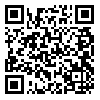BibTeX | RIS | EndNote | Medlars | ProCite | Reference Manager | RefWorks
Send citation to:
URL: http://jommid.pasteur.ac.ir/article-1-101-en.html
Introduction: Increasing of food-related diseases has led to the perception of diet importance. Plant-derived products (especially tea) as important sources of antioxidant and antimicrobial compounds play a major role in reducing food pathogens. In this study, total phenolic content, antioxidant and antimicrobial activity of four tea extracts including green tea, white, black and red teas were evaluated. Methods: The total phenolic amount was determined using Folin–Ciocalteu method and 1-diphenyl-2-picryl hydrazyl radical (DPPH) method was used for antioxidant activity measurement. The minimum inhibitory concentration (MIC) and minimum bactericidal concentration (MBC) of tea extracts against eight species of tested bacteria (Staphylococcus aureus, Streptococcus pyogenes, Streptococcus pneumonia, Saprophyticus Staphylococcus, Enterococcus faecali, Acinetobacter baumannii, Proteus mirabilis and Serratia marcescens) were evaluated by microdilution technique. Results: The results of this study showed that green tea and white tea extracts had the highest total phenolic content and antioxidant scavenging activity. Also, a strong positive correlation was observed between phenolic content and antioxidant activity in green tea and red tea. Conclusion: All four tea extracts showed inhibitions of several microorganisms. However, gram-negative bacteria were more resistant to inhibitory effects of tea extracts. As a result, non-fermented tea extracts showed more antioxidant activity and inhibition effect against tested bacteria.
Received: 2016/09/4 | Accepted: 2017/02/14 | Published: 2017/04/8
| Rights and permissions | |
 |
This work is licensed under a Creative Commons Attribution-NonCommercial 4.0 International License. |

This work is licensed under a Creative Commons Attribution-NonCommercial-NoDerivatives 4.0 International License.




